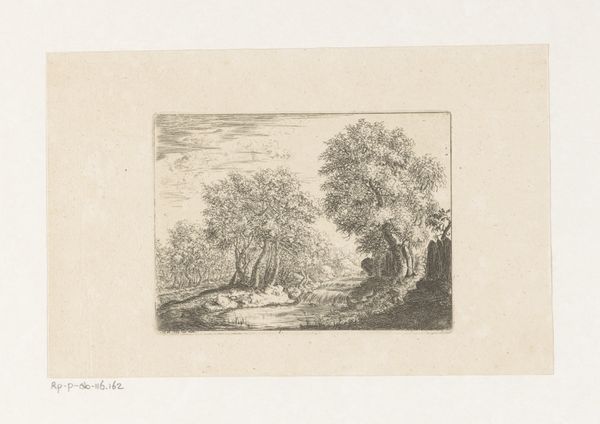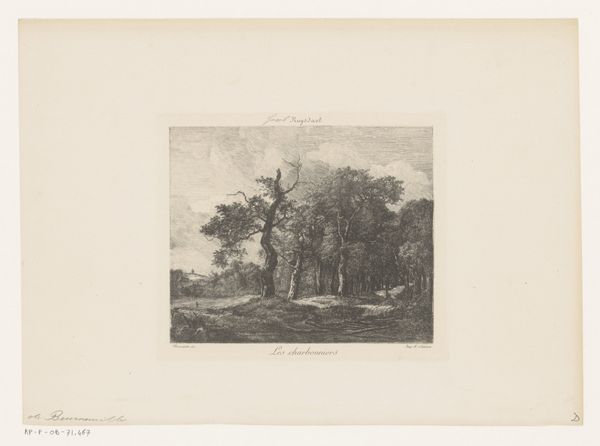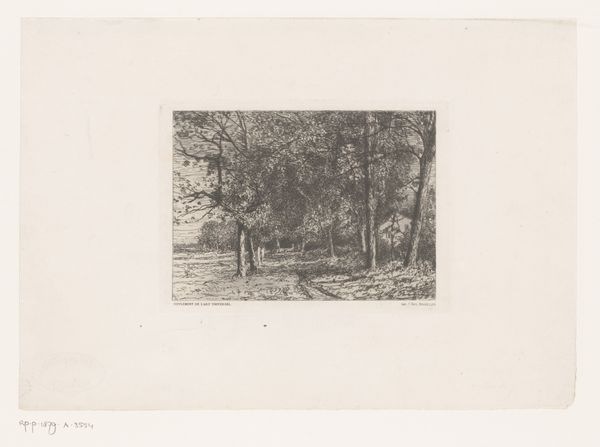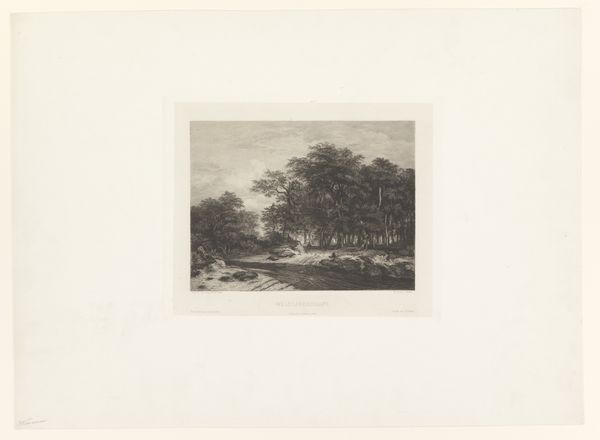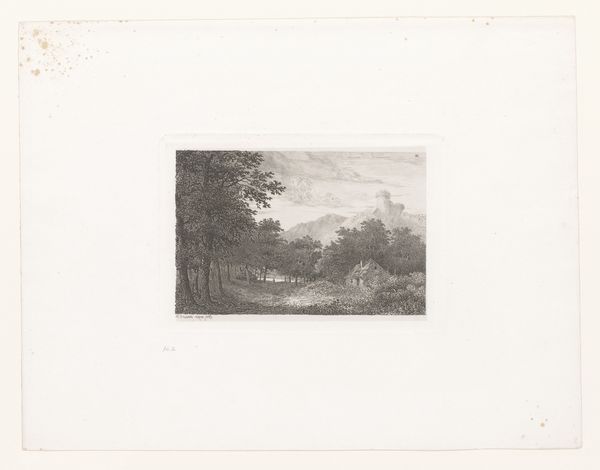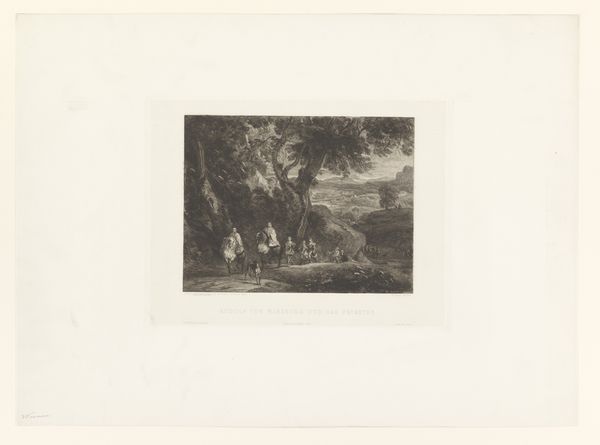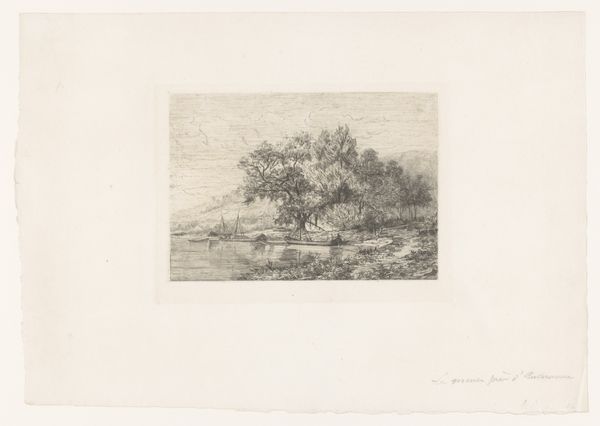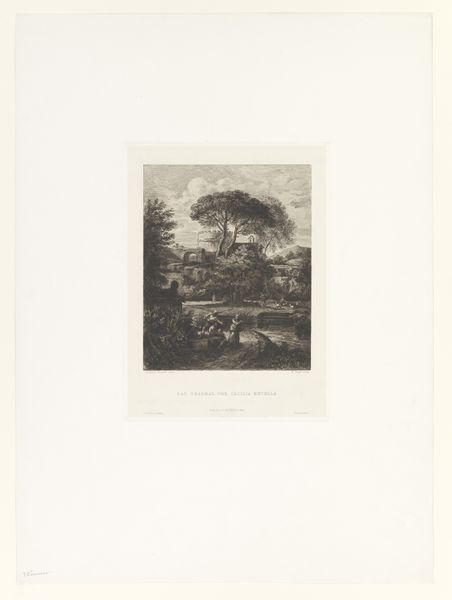
print, etching
# print
#
etching
#
landscape
#
romanticism
#
northern-renaissance
#
realism
Dimensions: height 159 mm, width 239 mm
Copyright: Rijks Museum: Open Domain
Curator: Welcome. Before us is "Woman with Wheelbarrow on a Forest Path" a print created sometime between 1800 and 1900 by E. Ourry using etching techniques. Editor: There's such a quietness to this scene. The whole composition seems to whisper rather than shout. A bit melancholy, wouldn’t you say? Like a forgotten corner of a dream. Curator: Indeed. The print showcases the Northern-Renaissance's preoccupation with detailed observation blended with the burgeoning Romantic sensibilities towards landscape and realism's fidelity to observed nature. Notice the interplay between light and shadow. Editor: You're right, the detail is pretty amazing, especially the textures of the trees and the way the light filters through the leaves. It almost feels like you could step right into that forest path and join her on her journey. But where is she going? Curator: Semiotically, the path, flanked by dense trees, serves as a motif representing life’s journey. The wheelbarrow perhaps symbolizes the burdens and the labour of daily existence, central to realistic depictions of rural life. The scale and detail evoke the style of Northern-Renaissance art; yet it anticipates photography's precise captures. Editor: That's interesting— burdens we all carry. Makes you think about her story. Is she weary, is she content, is she hopeful about whatever lies beyond the trees. This romantic mood it's not bombastic. I think it's more pensive and calm like watching her journey from a distance Curator: Certainly, the perspective evokes Romanticism through emotion and subjectivity, it encourages an emotional interpretation, contrasting with a detached formal analysis which views such narratives skeptically. Editor: It’s funny how a simple print can trigger such thoughts, isn’t it? I initially perceived sadness, but with the understanding that burden is life it shifts the meaning towards perseverance. Curator: Yes, the work operates on several conceptual levels, showcasing how technique, symbolism and realism converge. Editor: A good reminder that sometimes it is the quiet, simple things that are most evocative. I can feel her quiet strength walking this wooded path, pushing onwards toward home. Curator: Absolutely. Art opens a reflective lens to understand its structure. In contrast, you offered a more human engagement. Thank you for contributing your voice to our shared exploration of this print.
Comments
No comments
Be the first to comment and join the conversation on the ultimate creative platform.


